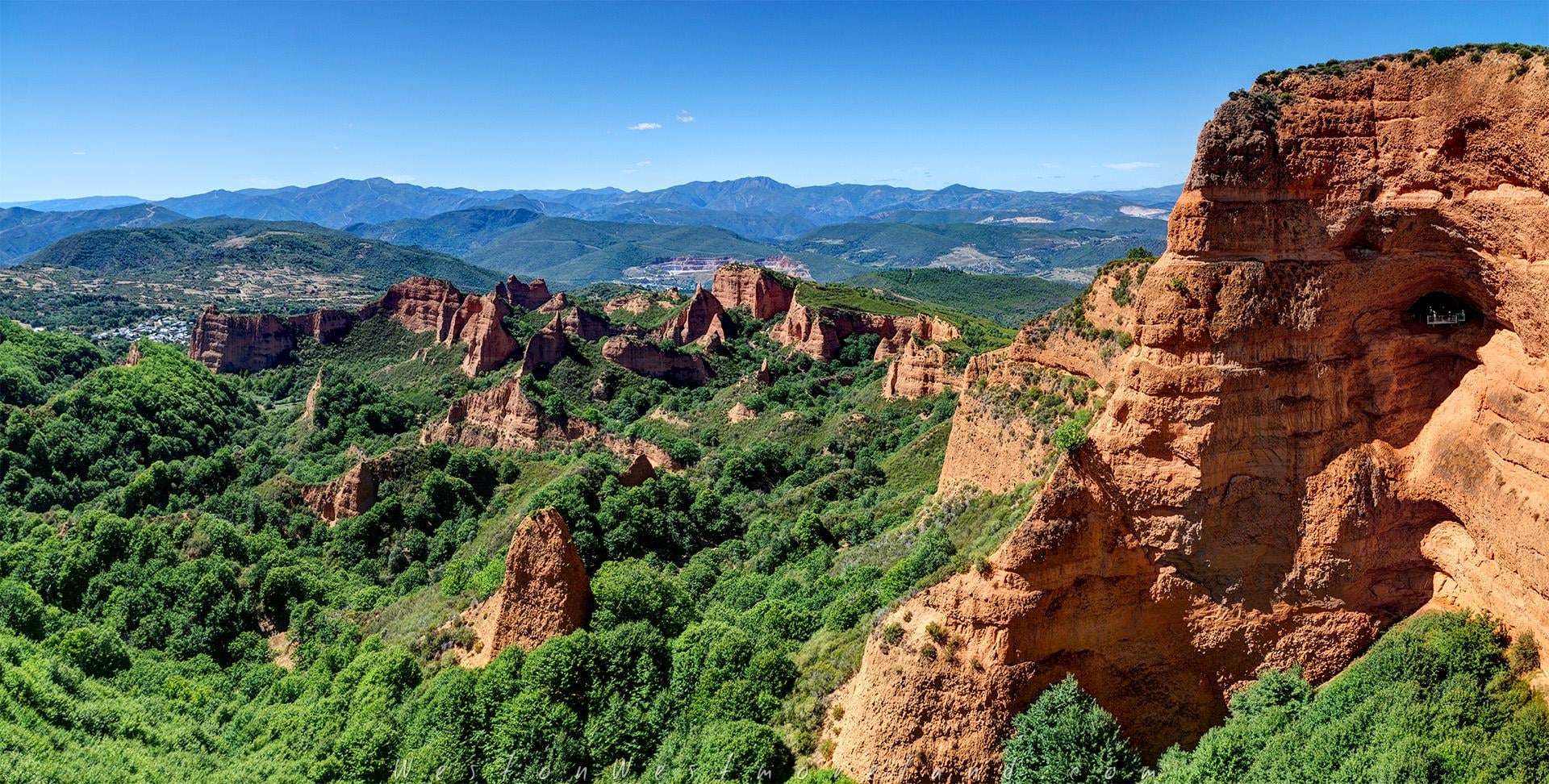
Right edge of the crater of Las Médulas, Spain, 1st c. AD. The largest open-pit gold mine in the Roman Empire, the Romans applied “Ruina Montium” here, a mining technique that destroyed the mountain with pressurized water. The whole mountain between the pow and the crater is gone… [1920×972] [OC]
by WestonWestmoreland

2 Comments
…The Romans employed a type of hydraulic mining which involved undermining a mountain with enormous quantities of water directed into galleries dug into the mountain to that effect. The irresistible pressure of water, supplied by interbasin transfer, burst the mountain and brought the remains flooding down towards a gigantic, predefined decantation system where the gold would be removed. At least seven long aqueducts tapped the streams of the area (where the rainfall in the mountains is relatively high) at a range of altitudes. The same aqueducts were used to wash the extensive alluvial gold deposits.
Pliny the Elder Elder, who was a procurator in the region in 74 AD, described in 77 AD in his *Naturalis Historia* a technique of hydraulic mining that may be based on direct observation at Las Médulas:
“Gold in our part of the world…is obtained in three ways: in the detritus of rivers, …. Another method is by sinking shafts; or it is sought for in the fallen débris of mountains [aut in ruina montium quaeritur].
The third method will have outdone the achievements of the Giants. By means of galleries driven for long distances the mountains are mined by the light of lamps—the spells of work are also measured by lamps, and the miners do not see daylight for many months.
The name for this class of mines is *arrugiae*; also cracks give way suddenly and crush the men who have been at work, so that it actually seems less venturesome to try to get pearls and purple-fishes out of the depth of the sea: so much more dangerous have we made the earth!”
Before the Roman conquest, the indigenous inhabitants obtained gold from alluvial deposits. Augustus conquered what became the Roman province of Hispania Tarraconensis in 25. Large-scale production of gold did not begin until the second half of the 1st century AD. Pliny stated that 20,000 Roman pounds (6,560 kg) of gold were extracted each year. The exploitation, involving 60,000 free workers, brought 5,000,000 Roman pounds (1,640,000 kg) in 250 years. When they finished there was no mountain left. Ruina montium…
As usual, my apologies for inaccuracies and mistakes.
“By means of galleries driven for long distances the mountains are mined by the light of lamps—the spells of work are also measured by lamps, and the miners do not see daylight for many months.”
Besides slaves, many of these workers were condemned criminals (“slaves of punishment”). “Condemnation to the mines” was a method of punishing serious crimes, short of outright execution. Death might not be guaranteed, but suffering certainly was.